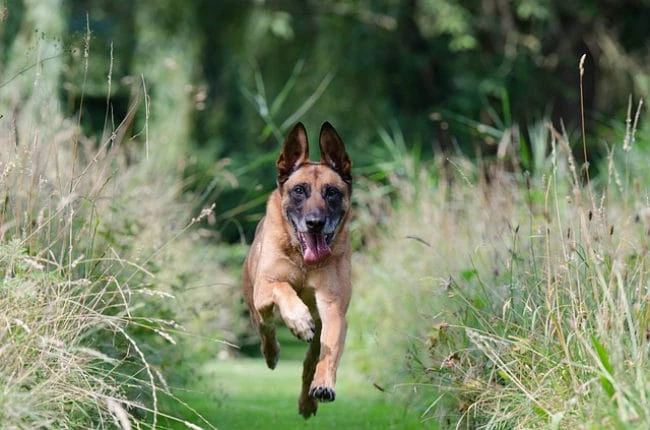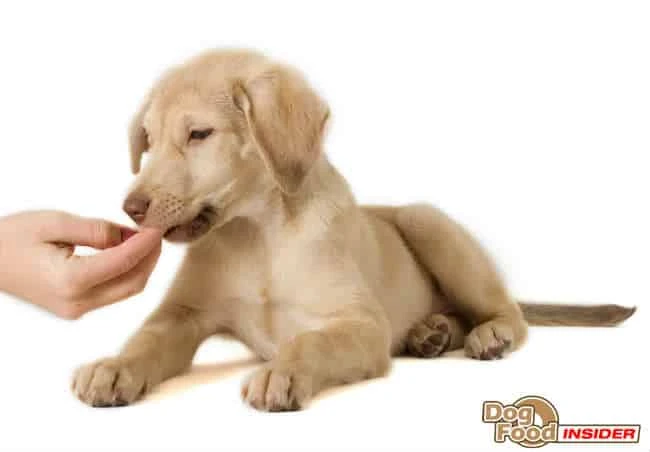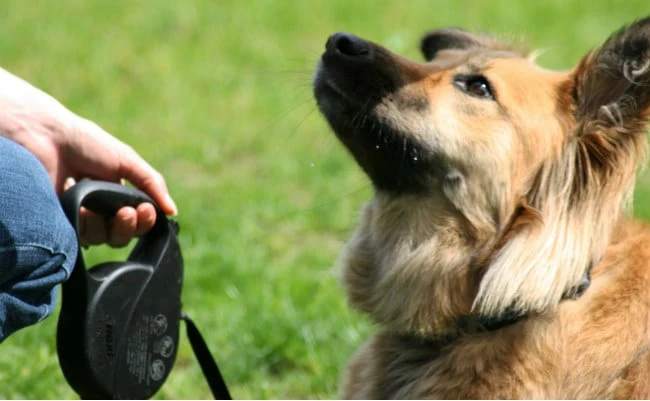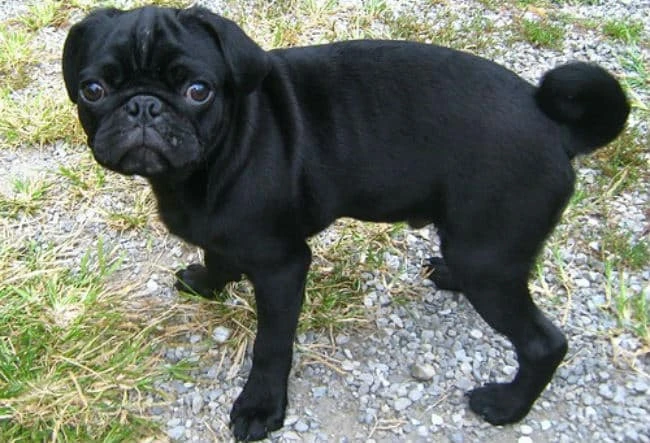Basic dog training commands including sit, stay, come & heel
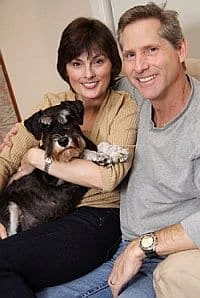
Ok so lets start with one of the most basic dog training commands and a command that all dog owners should master – the ‘heel’ command…
The ‘heel’ command is one of the most important dog training commands and one of the best tools to have at your disposal when you are out walking your dog or puppy.
1. Start with your dog in the ‘sit’ position and keep him on your left hand side.
To master your dog walking to heel it is best to use a telescopic leash and as we are using positive reinforcement you should also have a treat in your right hand.
2. Now you should have your dog on your left hand side and you should be holding the leash very close to your dog’s collar.
3. Now by using your dog’s name and by repeating the ‘Heel’ command start walking slowly forwards leading with your left leg.
4. After your dog has walked by your side after a few steps you should then give your dog some praise and the treat. Remember that dogs and puppies love rewards as it lets them know that they are doing what you have asked.
5. When your dog is successfully walking by your side or to ‘Heel’ and is not pulling on the leash. You can now start training your dog to turn to the right, you can do this by using the treat as a lure and incentive.
6. If you want to train your dog to turn to the left, you should start by sliding your hand down to the collar and slowly increasing your speed and using your left leg as the leading leg.
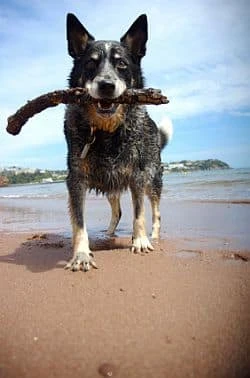
Still using a treat as a lure and using your dog’s name and the ‘Heel’ command, slowly turn your dog in a circle. Your dog will automatically follow the treat as you both turn. Congratulations, you have learned how to train a dog to heel. Ok so now lets train your dog to fetch, retrieve and give…
1. When training a dog to ‘fetch’, ‘give’ or ‘retrieve’ it is always best to use a bright colored toy as the retrieving object and make sure that your dog has seen it and sniffed it before you start throwing it.
2. Keep your dog attached to a leash and in the ‘sit’ position. With one hand on the collar show the toy to your dog and then throw it a very short distance.
3. As you throw it repeat the ‘fetch’ command or ‘retrieve’ command. It doesn’t matter which command you use as long as you use the same one every-time.
This is something to remember with all basic dog training commands – consistency is the key!
4. Now your dog has picked up his toy, you should give the ‘come’ command, you can learn this in our section on training your dog to come.
Your dog is still attached to the leash so crouch down and if he is hesitating give you the toy give him a couple of gentle tugs on the leash.
You should now be crouched down and have your hand open so that it is ready to take the toy from your dog.
5. As soon as your dog has come to you, you should give your dog lots and lots of praise and repeat ‘good dog’ and stroke him a few times. You want to let your dog understand that you are very happy with him. The more your dog feels that he has pleased you the more likely he is going to learn and the more likely he will repeat the command successfully.
6. Now put your hand directly under your dog’s jaw so that you don’t drop it and stand up with your hand on the toy (it should still be in your dog’s mouth).
As you stand up still holding the toy say ‘thank you’. As you say thank you firmly take the toy from your dog’s mouth.
7. So that your dog knows that you are still the pack leader and the one in control ask your dog to sit. You can now return the object to your dog as a final reward for being such a good boy.
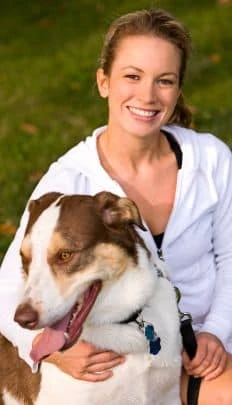
Learning how to train your dog to lie down can be extremely useful when you are out walking him and can stop him from getting into unwanted trouble and keep him safe.
It may seem like its too basic – but it is still very important…as most of the most simple commands are!
1. Keep your dog on your left side in the ‘sit’ position and with you kneeling down beside him.
2. Start by tucking the dog leash under your knees. Hold your dog’s collar with your left hand and hold a treat in your right hand.
3. Make sure that you are holding your dog by his leash so that he can’t move forward. Keep the treat in your closed hand and hold it just above your dog’s nose so that he can smell it.
4. Now that your dog has got the scent – make an ‘L’ shape by dropping your hand that is holding the treat to the ground between your dog’s front legs and then move it forwards along the ground.
Remember your other hand is holding the collar…
5. As your dog follows the treat and drops to the ground – you should now issue the ‘down’ command. As soon as your dog lies down make sure that you reward him straight away with the treat and lots and lots of praise.
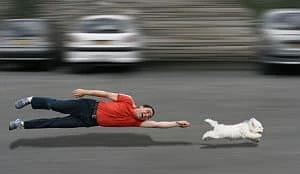
The ‘Sit’ Command
This is a really useful tool to have when you are out walking your dog or puppy. It maybe one of the more basic dog training commands compared to more advanced training techniques (but it’s still one of the most important).
You should start the training process in a quiet place in the House where there won’t be any interruptions, you want your dog to remain focused.
You should aim to keep the training session short but fun so that your dog won’t lose his attention span – about 15 mins for this training command is ideal – so lets get started!
1. You should start by facing your dog and move away keeping the dog leash in your left hand and a nice treat in your right hand.
2. You should keep calm so that you don’t get your dog excited – and ask your dog to come to you but using the treat as a lure.
3. When your dog has come to you – you should slowly move his treat over the top of his head. By doing this your dog’s eyes will automatically follow the treat.
4. As your dog continues to watch you move the treat over his head his legs will automatically bend as he does this.
5. Your dog will bend his legs and then sit – as soon as you see your dog bend his legs you should repeat the ‘sit’ command.
As we are using reward based training give your dog lots of praise and a treat as soon as he has positioned himself in the ‘sit’ position.
After a period of time when you have both practiced this basic dog training command you can then start to reduce the rewards but continue with the praise.
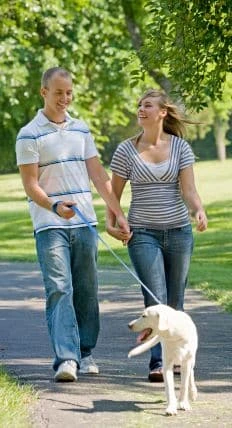
‘Sit’ and ‘Stay’…
Now we have mastered the ‘Sit’ stage we need to train your dog to ‘Stay’.
1. Now your dog should be in the sit position – you will need a long dog leash or even better a telescopic leash. You should also have a treat in your right hand.
2. Keep the tension on the leash and take a step forward using your right foot. As you do this you should repeat the stay command.
3. Your left leg should now be next to your dog’s front legs and your right leg slightly forward – about a shoulder width apart.
The dog leash should be kept vertically above your dog’s head.
4. Now you should move your left leg so that it now joins your right leg. Remember to keep eye contact with your dog at all times.
5. Now with the leash held above your dog’s head you should turn and face your dog. Keep your dog’s attention by holding the treat up high.
You should now be standing about one pace away from your dog with the leash held vertically above your dog’s head.
6. Now reward your dog for remaining in the ‘Sit’ position and staying there without moving forward.
7. Now still holding the dog leash vertically above your dog’s head – walk around your dog in a circle. Don’t issue any commands as this will only confuse your dog.
8. After you and your dog have practiced this basic dog training command several times your dog should sit and stay while still attached to the leash.
9. After you feel that your dog has mastered this training technique by remaining exactly where he was when you started you can start dropping the leash by your dog’s side and practicing it without holding the leash.
Continue each step exactly the same as you did when you were holding the leash…
10. After you have finished the training session and your dog is sitting in the ‘Stay’ position with the leash by your dog’s side – you can now reward your dog with the treat and lots of praise.
Now you have finished the training session let your dog know that the session has ended by opening your arms wide and repeating ‘OK’ to your dog for a job well done.
Although this is quite basic dog training you never know when you might need it especially if your dog was to suddenly run off – thats when the training really counts!
Below we have listed some more training commands for the novice dog or puppy owner…
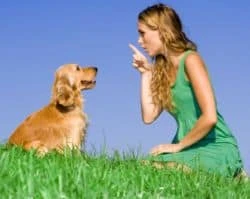
How to stop your dog or puppy from jumping up…
It is quite natural for dogs and puppies to get excited when they see a welcome face come through the door. However, it is far more pleasant for any owner if their dog or puppy stays on all fours rather than jump up (especially of the dog is really large).
Of course a dog that jumps up can also ruin peoples clothes, knock over older people or children and even lead to visitors giving your House a wide berth. So what do you do?
A puppy or dog jumps up to try and lick the face of any new visitor. Of course when the visitor greets jumping up with smiles and a pat on the head this will only reinforce the behavior.
1. To stop your dog from jumping up you should start the training by attaching a leash to your pooch whenever there is a knock on the door. Not only will the leash allow you to remain in control but it will also stop your visitor from teaching your dog any bad habits.
2. With your dog on a leash ask your visitor crouch down and only approach your dog or puppy if he or she has all four feet firmly on the floor. If your dog starts to jump up, then use the leash to control him.
After a while and with plenty of practice your dog or puppy will stop jumping up especially if every visitor to the House follows the set rules. You can ask friends to pop round too as this can increase the practice and success rate (make sure that all the members in the family only ever greet your pooch when all his or her feet are firmly on the ground).
Another method to cure this problem is to ask visitors to ignore your pooch completely until he or she has calmed down and then only when your pooch is calm should your dog or puppy be greeted and given attention.
Questions Answers…
Q: “Is timing important when training my dog or puppy. If so, why?”
A: Yes timing is very important when training your pooch especially when starting with the very basic dog training commands (because if you get it wrong at this stage it will stick). If you reward your dog or puppy at the wrong time, your pooch may think that you are rewarding him for something else and not the command that you were actually pleased with him or her completing. The faster you reward your pooch after the command has been completed the faster your dog or puppy will learn. Its also important to remember that certain foods have different values to your pooch so its vital that you find out which treat your pooch likes best.
Q: “My puppy seems to always want my attention, what can I do?
A: Its important that your puppy learns that he or she can’t always have your attention and needs to have some self control. But how can you achieve this? Ok a good example is when you are relaxing on the sofa and your beloved little pooch is jumping up, tugging at your trousers and just being a little troublesome. The best thing you can do is to occasionally just ignore him. Have a time-out as this will train your pooch that you are not always free provide attention on demand.
Q: “My puppy seems to be timid and frightened around strangers and backs away when strangers approach. What can I do?”
A: It’s very important that your puppy is 100% happy with the family handling him before you let strangers approach. You should also let your puppy take his own time when introducing him to new people.
Q: “How can I get my puppy used to walking near traffic?”
A: You should start by finding somewhere nice and quiet where your pooch wont be be distracted. Get your pooch used to walking along the road so that she or she can see parked cars (remember this maybe the first time he has ever seen a car). Once your pooch is used to walking with you along the pavement (using the heel command) you should start building his confidence by walking along pavements where there is occasional traffic (try and find a wide pavement so that your pooch can remain at a distance from passing cars).
You should keep yourself inbetween your dog and passing cars as this will increase your pets confidence. Now when you feel tha your pooch’s confidence has increased you can introduce him to busier roads.
Try and use the ‘Sit’ position on the pavement when cars are passing as this will also build confidence. If you have been successful in teaching your pooch this basic dog training command at home then it should work anywhere. Of course if your pooch is distracted by the traffic then you could use a treat to encourage him or her to remain in position.
You could also play games (at a distance from the road) so that your pooch starts to get good associations with traffic. You should always keep your pooch on a leash when walking near traffic as this will keep you in control and stop your puppy running off if he or she becomes startled.
Q: “My dog has always been nervous and no amount of basic training seems to work. Are there any natural alternative therapies that can help make more dog more relaxed?”
A: Yes there are lots of different alternative therapies out there. For example there are lots of homeopathic remedies available for treating nervous dogs including Aspen, Larch, Impatiens, Oat Tinture, Pulsatilla and Aconite.
Interestingly there is also a synthetic dog appeasing pheromone or (DAP) that is amazing and can be prescribed by most vets. This pheromone is based on the same naturally occuring pheromone that is produced by the mammary tissue and released as a scent hormone by a mother of young puppies to help her offspring remain calm.
